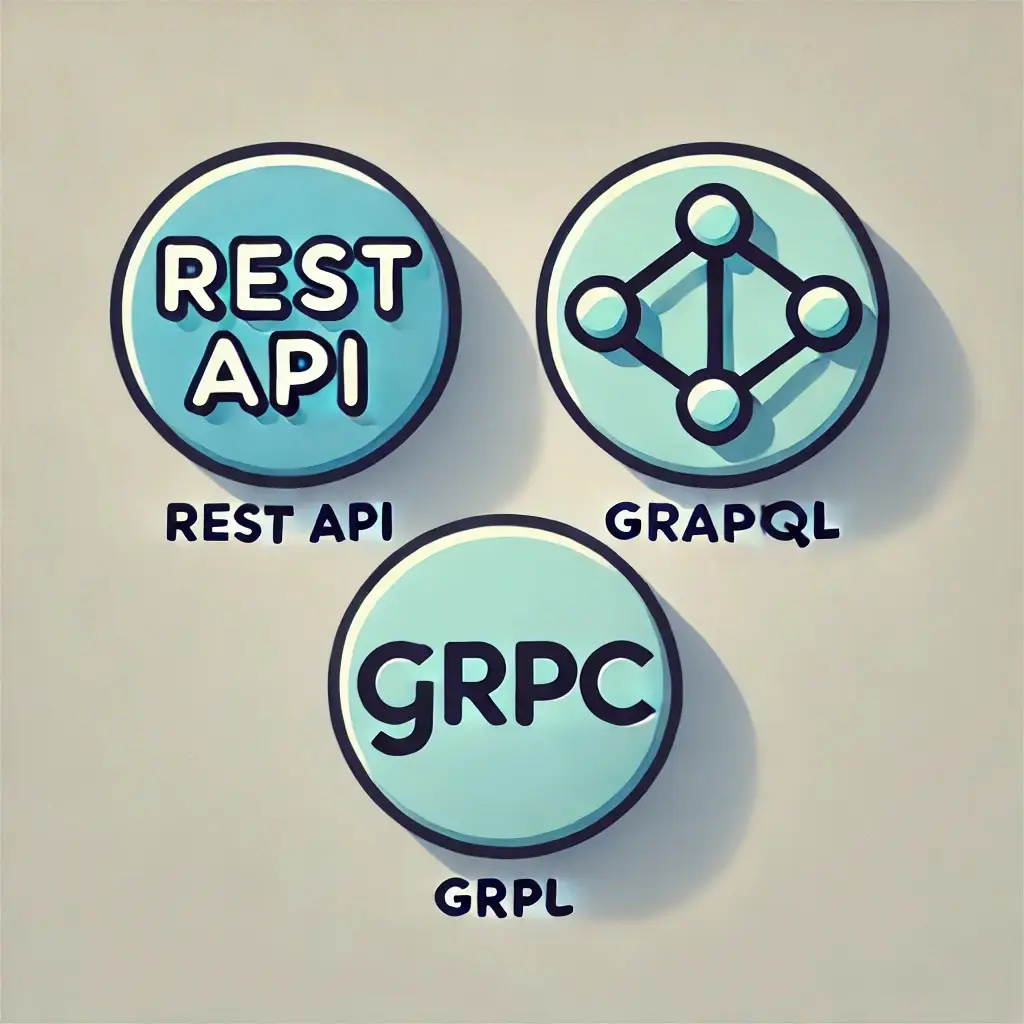REST vs GraphQL vs gRPC: Choosing the Best Solution for Your API
Introduction
Hello, devs!
APIs are an essential part of modern development, and there are currently three main ways to communicate with them: REST, GraphQL, and gRPC.
In this post, we’ll give an overview of each, understand their differences, advantages, and disadvantages, all to help you choose the best solution for your project.
Let’s go?

What is REST?
REST (Representational State Transfer) is an architecture for developing distributed systems that uses the HTTP protocol for communication between client and server. Created by Roy Fielding in his doctoral thesis in 2000, REST has become the foundation of most modern APIs, especially due to its simplicity and ease of adoption.
RESTful APIs work through resources represented by URLs, using HTTP methods (like GET, POST, PUT, and DELETE – you can see the details of each here) to perform operations on these resources. One of REST’s main advantages is its language and data format independence, typically using JSON for data exchange but also supporting XML, YAML, and others.
REST is widely used due to its compatibility with virtually any web technology. Additionally, it offers a straightforward structure, making it great for both beginner developers and large teams.
What is GraphQL?
We can say that GraphQL is a query language for APIs and a runtime to handle them. It was developed internally by Facebook in 2012 and made open-source in 2015. Unlike REST, where the structure of returned data is fixed, GraphQL allows the client to specify exactly which data is needed, making communication more efficient.
One of GraphQL’s main characteristics is its flexibility. Instead of multiple API calls to different endpoints (as would be the case with REST), GraphQL allows the client to request multiple resources in a single query, reducing the amount of data transferred and improving application performance.
However, this flexibility can become a double-edged sword. Implementing GraphQL can be more complex, and if the query is not well designed, it can result in server overload since it needs to resolve all requested fields at once.
Thus, GraphQL is especially useful in scenarios where the front-end needs varied data or when the goal is to avoid excessive API requests.
What is gRPC?
gRPC is a communication framework developed by Google that uses the HTTP/2 protocol for data transport and Protobuf (Protocol Buffers) for data serialization. It’s the youngest of the three, launched in 2015, and is an excellent choice for microservices systems and applications that require low latency and high performance.
One of gRPC’s biggest advantages is the ability to make direct calls between methods of different services (Remote Procedure Calls – RPC) as if they were all on the same machine. This, along with bidirectional data streaming support, makes gRPC ideal for real-time applications, like video streaming.
However, gRPC is more complex to implement compared to REST and GraphQL, and its adoption may require a significant learning curve, especially for teams used to simple HTTP standards. Moreover, serialization with Protobuf, though efficient, requires developers to learn and maintain data schemas in .proto files.
In summary, gRPC is an excellent choice when performance and efficiency are crucial, such as in high-scale microservices environments.
Key Differences between REST, GraphQL, and gRPC
Each of these technologies has distinct characteristics that make them more suitable for different types of applications. Let’s compare REST, GraphQL, and gRPC in terms of protocol, performance, flexibility, and resource usage:
- Protocol: REST uses HTTP/1.1, GraphQL also operates over HTTP, but gRPC uses HTTP/2, which supports stream multiplexing, header compression, and persistent connections, resulting in more efficient communication;
- Performance: gRPC, with its data compression and HTTP/2 support, offers the best performance in terms of latency and bandwidth consumption. REST, on the other hand, is less efficient due to the overhead of HTTP headers and the lack of compression. GraphQL improves performance by avoiding data over-fetching but can overload the server with complex queries;
- Flexibility: GraphQL is far more flexible, allowing the client to specify exactly which data is desired. REST is fixed, always returning the same data for each endpoint. gRPC, though powerful, is more rigid due to its data schema defined in Protobuf;
- Resource Usage: REST is the simplest and most universal choice, supported by any environment that works with HTTP. GraphQL is excellent for complex interfaces and applications with dynamic data needs. gRPC is the best option for efficient communication between microservices, especially in large-scale distributed systems;
Application Scenarios
Choosing between REST, GraphQL, and gRPC greatly depends on your project’s needs. Here are some recommendations for common scenarios:
- Public APIs: REST is the de facto standard for public APIs due to its simplicity, universality, and ease of integration. It is well supported and understood, making it easier for developers worldwide to adopt;
- Complex Front-End Applications: If your front-end application needs complex and varied data, GraphQL might be the best choice. It allows the client to request only the necessary data, which is great for avoiding excessive network load and improving responsiveness;
- Microservices: In systems where microservices communicate frequently and performance is critical, gRPC is the best option. Its efficiency in terms of latency and resource usage makes it a superior choice for inter-service communication;
- Low Latency Environments: For real-time applications, such as video streaming, gRPC stands out again with its bidirectional streaming capabilities and low latency.
Conclusion
In summary, REST, GraphQL, and gRPC are powerful tools, each with its strengths and weaknesses. The right choice depends on your project’s context: REST for simplicity and universal integration, GraphQL for flexibility and data efficiency, and gRPC for high performance and microservices communication.
I’ve created a simple project that uses a Client-Server system with these three approaches. Click here to access my GitHub repository.
See ya!
